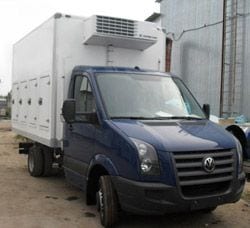
Test drive Toyota GT 86: breaking point
Content

The GT 86 brings liveliness to the Toyota range and is reminiscent of the days when some of the brand's representatives were cult status. Could the new model bring back the glory of its famous ancestors?
I admit that in recent years I have been more interested in Toyota hybrid technology and in issues such as the energy cycle of both electric cars and combustion engines. Moreover, I recently had a chance to personally talk with some of the creators of these systems.
But now - here I am driving something that does not have the letter "H" in its abbreviation in any form. Neither separately nor as part of other words. This time, the GT 86 combination - the first two letters succinctly express the character of the car, and the addition of 86 should bring us back to the brand's historical values and, in particular, to the AE 86 badge, one of the last rear-wheel drive Corolla models with a special spirit ...
Back in Time
A look at the thermometer, which seems to have been carried over to the 90s, takes me back to my personal history, including the likes of the Carina II, Corolla, Celica 1980 and Celica Turbo 4WD Carlos Sainz. In fact, my thoughts go directly to the latter (and its incredible turbo 3S-GTE), which I think is as similar in spirit to the GT 86 as to the AE 86.
So, with the emotional charge that I was carrying all the time, retrieving the number 2647 from a limited edition, named after the Spanish series of racing aces, I press the Start / Stop Engine button on the GT 86 and go back and forth in my memories.
Yes, in the eighties and nineties, Toyota symbolized not only quality, but also a special spirit, and models such as the Celica, MR2 and Supra forced brand owners to smell gasoline, talk about power and engines, instead of silently turning the key. and get to work, being carried away by the car just because of how the air conditioner is turned on.
Well, better late than never. The development of the GT 86 actually took a long time, but the result is definitely worth the wait. No deviation from classic proportions – a wedge-shaped coupe whose sculptural relief and transparent special relationship to the Celica heritage can be recognized as the sixth generation of the famous model (especially in the curves of the rear fenders). An excellent stylistic base on which every precise detail related to the visual dynamics of the car is then built - the modernism of pointed lines, the trapezoidal, low-lying opening of the front grille, the folded headlights and the whole composition of the hips of the rear fenders. along the arrow-shaped roof line. And to all this stylistic ensemble, something is added that makes the car enthusiast scream with admiration - under the hood in front is not something, but a classic boxing bike created not by anyone, but by Subaru.
Coincidence or not
Parameters, random or not, include a piston stroke and a bore of 86mm. However, Toyota engineers contributed to the high-tech nature of this engine by adding to the basic architecture a complex combined injection system into the intake manifolds and directly into the cylinder depending on conditions (when the engine is cold and under high load, for example, the direct injection system works). Thanks to direct injection, an extremely high compression ratio of 12,5:1 can also be used – the same as in the Ferrari 458 – which greatly increases the efficiency of the gasoline engine.
Despite the high technology, the latter is part of the original spirit of the GT 86. The concept is simple and concise - rear-wheel drive, low center of gravity, almost even weight distribution and naturally aspirated engine. There is no turbocharger, and the engine does not seem to need one - the feeling when driving is instant, direct and inviolable. Just like the direct steering system, which changes direction quickly and precisely, challenging everyone in the class, requiring a certain amount of pedal force and a short, hard speed of the shift lever moving along its paths with a brand-specific click.
While it doesn't suffer from a lack of torque and deploys it with the proper throat sound on both tailpipes (randomly or not with a diameter of 86mm each) for dynamic propulsion, the GT 86 still requires revs. More and more, exceeding the limit of 7000 rpm. Otherwise, you won't be able to get close to the cornering dynamics that match the suspension's capabilities (with double-triangular struts at the rear and MacPherson struts at the front). Without any design changes, the chassis could run this engine's turbocharger - while maintaining enough comfort for everyday use thanks to the installation of not very stiff springs, but stiff shock absorbers.
Though only rear-wheel drive, this car tends to achieve the astonishing neutrality of the Celica Turbo 4WD, and only when accelerating harder into a corner does it begin to express a desire to bring the rear out. To improve traction, he also took care that he borrowed an eminent distant relative - a rear torsion differential, which, in the humble opinion of this author, remains one of the most difficult mechanical solutions, but also one of the best in its role. rear or wheelbase for vehicles with dual transmission.
High-tech product of its time
It is currently unknown what he will do after leaving office. In the meantime, these 200 hp. They do an excellent job - in the test, acceleration in 7,3 seconds is even 0,3 seconds better than recorded in the manufacturer's dynamic parameters. The movement is accompanied by a pleasantly orchestrated accompaniment emanating from widely separated pairs of combustion chambers, and all this is combined with very decent fuel consumption in everyday life - in the standardized AMS cycle, the GT 86 manages just 6,0 liters per 100 km. This is largely due to the low weight of 1274 kg, which is due not only to high-strength steel, but also to the skillful use of lightweight materials in the interior, without compromising the overall high quality feeling of something assembled in Japan.
GT 86 does not claim to be a super aggressive type. This vehicle is a high-tech product of its time, in which fuel consumption and emissions remain paramount. Its weight is almost 100 kg less than that of a family compact car such as the VW Golf, its consumption coefficient is only 0,27, and its engine, as already mentioned above, is one of the most efficient gasoline units. Thanks to the suspension adjustments, the GT 86 can easily become the main vehicle for travel, and the comfortable sports seats and the sports mode button remind that it can do whatever it wants.
Taking my eyes off the electronic fuel gauge, I look at the gauge on the tank, which also looks pretty much the same as the old Celica. The long process of creating a model, which began in 2006, was definitely worth it - if only because I managed to return me to the past. Something that didn't happen with hybrid models.
text: Georgy Kolev
Evaluation
Toyota GT 86
Why did Toyota have to wait so long to introduce this model? Maybe because such a combination of qualities is not created just like that in one day. Only the brakes can be even better.
technical details
| Toyota GT 86 | |
|---|---|
| Working volume | - |
| Power | 200 k.s. at 7000 rpm |
| Maximum torque | - |
| Acceleration 0-100 km / h | 7,3 with |
| Braking distances at a speed of 100 km / h | 38 m |
| full speed | 226 km / h |
| Average consumption fuel in the test | 9,5 l |
| Base Price | 64 550 levov |

